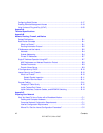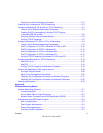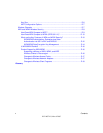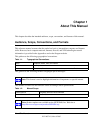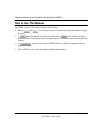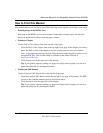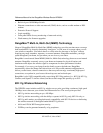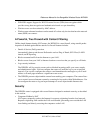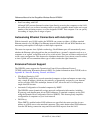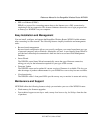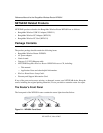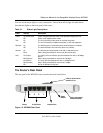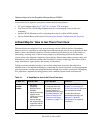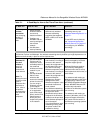
Reference Manual for the RangeMax Wireless Router WPN824
2-2 Introduction
202-10072-01, March 2005
• Built in 4-port 10/100 Mbps Switch.
• Ethernet connection to a wide area network (WAN) device, such as a cable modem or DSL
modem.
• Extensive Protocol Support.
• Login capability.
• Front panel LEDs for easy monitoring of status and activity.
• Flash memory for firmware upgrades.
RangeMax™ Multi-In, Multi-Out (MIMO) Technology
Netgear’s RangeMax Multi-In, Multi-Out (MIMO) technology provides ten times more coverage
than standard 802.11g alone by eliminating “dead spots” in your area of coverage where you use
your wireless computers. Your whole house or office suite now becomes a “hot spot” without
requiring any range extenders, repeaters, or external antennas. RangeMax maintains your high
speed throughout your home, not just when you are close to your router.
RangeMax is an advanced Smart MIMO (Multi-In, Multi-Out) technology that uses seven internal
antennas. RangeMax constantly surveys your home environment for physical barriers and
interference and adjusts the wireless signal to compensate for these performance blockers.
For example, if you carry your laptop from the family room to the bedroom, RangeMax
automatically senses the change and selects from over 100 possible antenna configurations to
deliver you the fastest, clearest connection so that everyone can enjoy consistently high-speed
connections, everywhere in your house with no drop-outs and no dead spots.
RangeMax is also 100% compatible with your existing 802.11b/g products (i.e., 802.11b, 802.11g,
Centrino, and SuperG™ wireless clients) and boosts their range and speed by up to 50%.
802.11g Wireless Networking
The WPN824 router includes an 802.11g wireless access point, providing continuous, high-speed
108 Mbps access between your wireless and Ethernet devices. The access point provides:
• 802.11g wireless networking at up to 108 Mbps.
• 802.11g wireless networking, with the ability to operate in 802.11g-only, 802.11b-only, or
802.11g and b modes, providing backwards compatibility with 802.11b devices or dedicating
the wireless network to the higher bandwidth 802.11g devices.
• 64-bit and 128-bit WEP encryption security.
• WEP keys can be generated manually or by passphrase.



